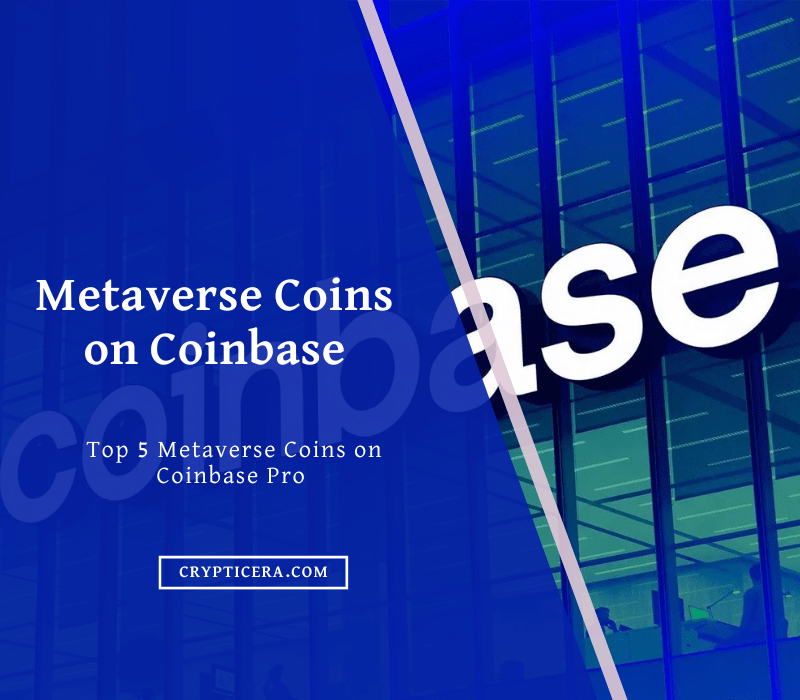As the popularity of non-fungible tokens (NFTs) continues to grow, it’s crucial for collectors and investors to prioritize the security of their digital assets.
One of the most secure ways to store NFTs is by using a hardware wallet, which is a physical device that stores private keys offline.
In this article, we will explore the pros and cons of using cold storage and review the top 6 best hardware wallets for NFTs available in the market.
What is a hardware wallet for NFTs?
A hardware wallet is a physical device that stores your private keys, which are necessary to access your NFTs.
Unlike a software wallet, which stores your private keys on a computer or mobile device, a hardware wallet keeps your keys offline, reducing the risk of hacking or theft.
Hardware wallets are also designed to protect against physical attacks, such as tampering or theft.
Best Hardware Wallets for NFTs Compared
| Hardware Wallet | Ledger Nano X | Trezor Model T | SafePal S1 | Keystone Pro | SecuX Nifty | BitBox02 |
|---|---|---|---|---|---|---|
| NFT Storage | Yes | Yes | Yes | Yes | Yes | Yes |
| Supported Coins | 5,500+ | 1400+ | 10,000+ | 5,500+ | 10,000+ | 1000+ |
| Connectivity | Bluetooth, USB | USB, MicroSD | USB | QR Code | USB | USB |
| Security Features | Secure Element | PIN, Passphrase | EAL5+ | Secure Element, Fingerprint, PIN | EAL6+ | Secure Element, PIN, Passphrase |
| Compatibility | Windows, macOS, Linux | Windows, macOS, Linux | iOS, Android | Windows, macOS, Linux | Windows, macOS, Linux | Windows, macOS, Linux |
| Price | $149.00 | $219 | $49.99 | $129.00 | $59.00 | $115.00 |
Top 7 hardware wallets for NFTs [Reviews & Comparison]
1. Ledger Nano X: Most Trusted Hardware Wallet
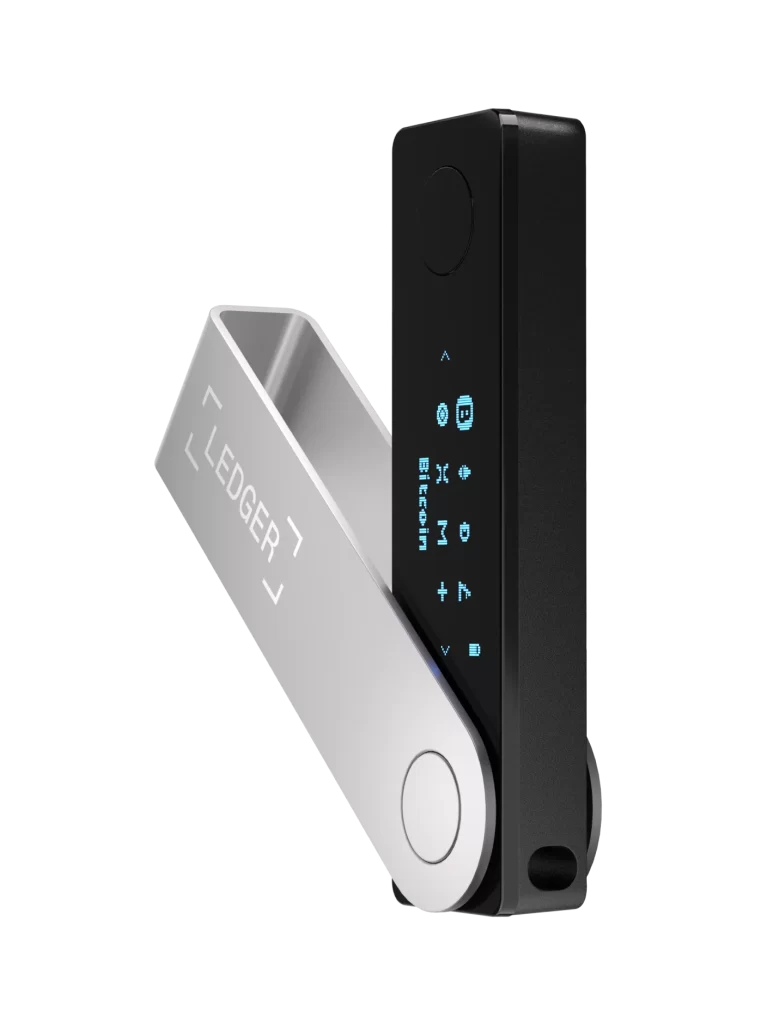
The Ledger Nano X is a popular hardware wallet for storing cryptocurrencies and NFTs. It is a USB-sized device with a small screen that displays transaction information.
The Nano S supports over 5,500 cryptocurrencies, including all ERC-20 tokens (the most common token standard for NFTs).
The device also features a 24-word recovery phrase and two-factor authentication for added security.
Read: Ledger Nano X Review
Pros
- Advanced security features, including secure element chip and PIN code.
- Bluetooth connectivity for mobile accessibility.
- Support for over 1800 cryptocurrencies, including NFTs.
- Large storage capacity for multiple NFTs and cryptocurrencies.
- Easy-to-use mobile app for managing NFTs on the go.
Cons
- Higher price compared to other hardware wallets.
- Bluetooth connectivity may raise concerns about potential vulnerabilities.
- Requires app installation on the device for managing NFTs.
2. Trezor Model T: Top Wallet for Ethereum Blockchain
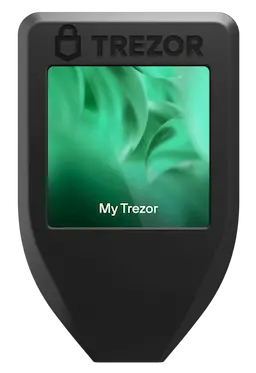
The Trezor Model T is another popular hardware wallet for cryptocurrencies and NFTs. It features a touchscreen display and supports over 1,400 cryptocurrencies, including all ERC-20 tokens.
The Model T also has a recovery seed option for secure backup and a passphrase feature for additional security.
Pros
- Open-source firmware for enhanced security and transparency.
- Touchscreen display for easy navigation
- Supports multiple cryptocurrencies, including NFTs
Cons
- More expensive than some other hardware wallets
- Limited storage capacity (up to 100 apps)
3. BitBox02: Best Hardware wallet for Digital Assets
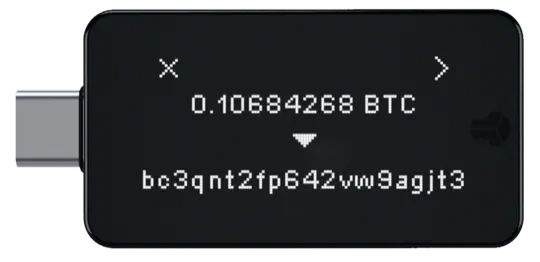
BitBox02 is a product of Shift Crypto, a Swiss company that specializes in developing high-quality hardware wallets for cryptocurrency investors.
BitBox02 uses a dual-chip architecture to ensure maximum security for your digital assets. The first chip is a secure chip that stores your private keys and signs transactions offline.
The second chip is a general-purpose chip that communicates with your computer or mobile device.
It supports a wide range of cryptocurrencies, including Bitcoin, Ethereum, Litecoin, and NFTs.
Read: BitBox02 Review
Pros
- Open-source firmware and security chips for enhanced security.
- Backup and recovery options, including microSD card.
- Supports multiple cryptocurrencies, including NFTs.
- User-friendly interface for managing NFTs and other digital assets.
- Compact and durable design for portability.
Cons
- Limited storage capacity for NFTs and cryptocurrencies.
- Requires USB connectivity for transactions and transfers.
4. SecuX Nifty: Only NFT Cold Wallet
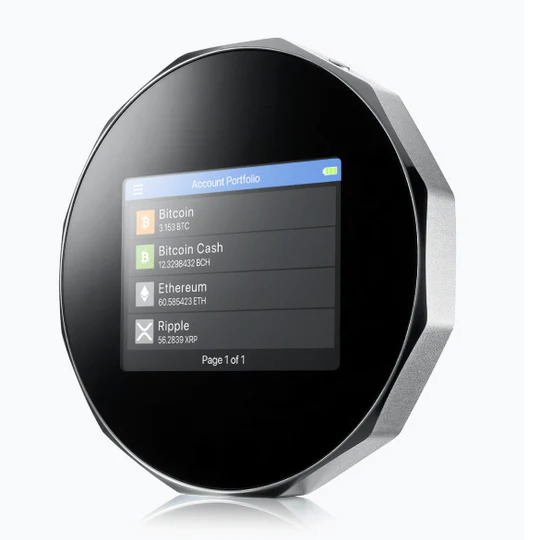
The SecuX Nifty is an NFT wallet that supports major blockchain networks like Ethereum and Binance Smart Chain. It also supports multiple types of NFTs, including ERC-721 and ERC-1155 tokens.
The wallet has a user-friendly interface, and its secure chip technology ensures that your NFTs are safe from hackers.
You can add and manage NFTs, transfer and receive tokens, and check your NFT ownership and transaction history all from the wallet’s user interface.
Full Guide: SecuX V20 Review
Pros
- Enhanced security for Non-Fungible Tokens
- Convenient and easy to use
- Compatibility with major blockchain networks
- Manage 500+ accounts
Cons
- Higher price and shipping charges
- May have limited availability in some regions
5. SafePal S1: Air-gapped hardware wallet for NFTs
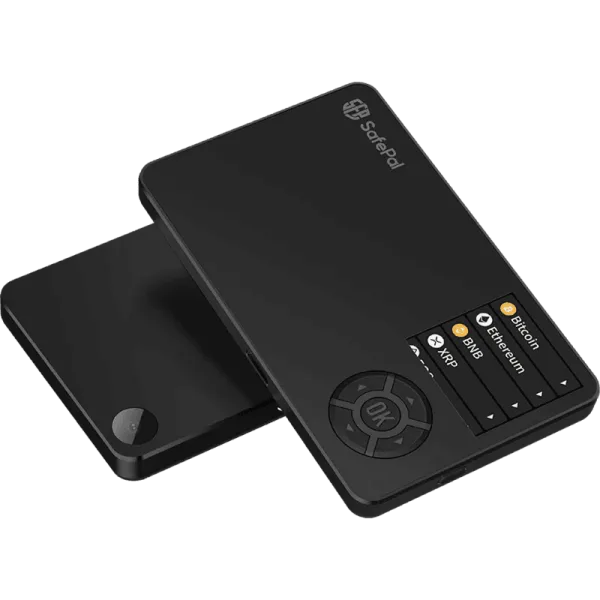
SafePal S1 is a small, portable device that allows you to securely store your NFTs offline, away from the internet and potential hackers.
The Safepal S1 is equipped with a 1.3-inch high-resolution screen, which allows you to easily view and manage your NFTs.
It’s also easy to use, with a simple interface that’s accessible to anyone, even those with no prior experience in cryptocurrency.
The device is also tamper-proof, meaning that it’s virtually impossible for anyone to hack or steal your NFTs without physical access to the device.
Pros
- Military-grade security features, including air-gapped technology and fingerprint recognition.
- Large storage capacity for multiple NFTs and cryptocurrencies.
- Backup and recovery options, including a recovery seed phrase and SD card.
- Affordable and Portable credit card size
Cons
- No Bluetooth, No Touchscreen
- QR Code transaction signing may not easy for beginners
6. KeyStone Pro: Best Offline NFT Wallet
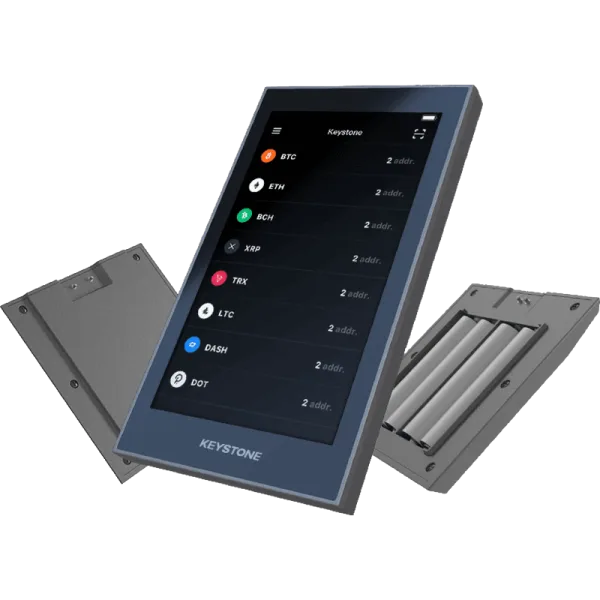
The Keystone Pro Wallet is another hardware wallet for NFTs. It provides a secure mode of storage for your cryptocurrency assets in an offline setting.
This diminutive, portable gadget can be tethered to your computer or mobile device through USB or Bluetooth.
The Keystone Pro Wallet was fashioned through sophisticated methods that ensure the utmost level of protection for your digital holdings including NFTs.
Read More: Keystone Pro Review
Pros
- Advanced security features
- Supports multiple cryptocurrencies
- User-friendly interface
Cons
- High cost
- Risk of device loss/damage
- Less convenient than software-based wallets
What are NFTs?
NFTs are digital assets that represent ownership of a unique item or piece of content, such as a piece of artwork, music, or video.
They are stored on a blockchain, which allows for transparency and immutability of ownership.
NFTs have become increasingly popular in recent years, with some selling for millions of dollars.
Related: What is an NFT? A Beginner’s Guide
How do hardware wallets for NFTs work?
Hardware wallets for NFTs work similarly to other hardware wallets, such as those used for cryptocurrencies.
They store your private keys offline, typically on a small device that can be connected to your computer or mobile device via USB or Bluetooth.
To access your NFTs, you must physically connect your hardware wallet and enter a PIN code or passphrase.
How to setUp a hardware wallet for NFTs [Store and View]
Using a hardware wallet for NFTs is straightforward, but there are a few important steps to follow to ensure your assets are properly secured.
1. Setting up your hardware wallet
The first step is to set up your hardware wallet by following the manufacturer’s instructions.
This typically involves connecting your device to your computer or mobile device and creating a new wallet, which will generate a unique set of private keys.
2. Transferring NFTs to your hardware wallet
Once your hardware wallet is set up, you can transfer your NFTs to it by sending them from your existing digital wallet to your hardware wallet’s public address.
This process will vary depending on the platform you are using, but you will typically need to enter your hardware wallet’s public address and confirm the transaction.
3. Managing your NFTs with your hardware wallet
Once your NFTs are stored on your hardware wallet, you can manage them using the device’s interface.
This may involve viewing your NFTs, transferring them to other wallets or exchanges, or creating new NFTs.
Security considerations when using a hardware wallet for NFTs
While hardware wallets are generally considered to be very secure, there are a few important security considerations to keep in mind when using them for NFTs.
1. Seed phrase protection
Your hardware wallet will generate a seed phrase, which is a list of random words that can be used to restore your wallet if it is lost or stolen.
It is essential to keep this seed phrase safe and secure, as anyone who has access to it can gain access to your wallet.
2. PIN code protection
Your hardware wallet will also require a PIN code or passphrase to access your NFTs. It is essential to choose a strong PIN code and to keep it safe and secure.
3. Firmware updates
Hardware wallets are typically updated regularly to address security vulnerabilities and add new features.
It is essential to keep your firmware up to date to ensure your wallet remains secure.
Must Check: NFT Scams 101: 8 Popular Scams And How To Stay Safe
Final Thoughts: Which Should You Choose?
If you prioritize maximum security and are willing to invest in a premium option, options like Ledger Nano X or Trezor Model T may be suitable for you. They offer advanced security features, ample storage capacity, and user-friendly interfaces.
On the other hand, if you are looking for a more budget-friendly option, you may consider wallets like SafePal S1 or BitBox02, which offer affordability while still providing decent security features and ease of use.
If you value durability and tamper-proof design, Cobo Vault Pro [Keystone Pro] could be a good choice, with its military-grade security features and large storage capacity.
FAQs
- Can I use a hardware wallet for all types of cryptocurrencies, including NFTs?
Yes, most hardware wallets support multiple cryptocurrencies, including NFTs. However, it’s important to check the specific wallet’s compatibility before making a purchase.
- Are hardware wallets completely safe from hacking or theft?
While hardware wallets provide advanced security features, no system is completely foolproof. It’s crucial to follow best practices for securing your hardware wallet, such as setting strong passwords, enabling PIN codes, and keeping your recovery phrases safe.
- Can I store my NFTs on an exchange or online wallet instead of a hardware wallet?
Storing NFTs on exchanges or online wallets may pose higher risks of hacking or theft. It’s generally recommended to store NFTs in a cold wallet for enhanced security and control.
- Can I transfer NFTs from one hardware wallet to another?
Yes, you can transfer NFTs from one hardware wallet to another by following the wallet’s transfer process. However, it’s crucial to double-check the recipient wallet’s compatibility and address before making any transfers.
- Are hardware wallets suitable for beginners who are new to cryptocurrency and NFTs?
While hardware wallets are generally user-friendly, they may still have a learning curve for beginners. It’s essential to familiarize yourself with the wallet’s features and functions before using it to manage your NFTs.

